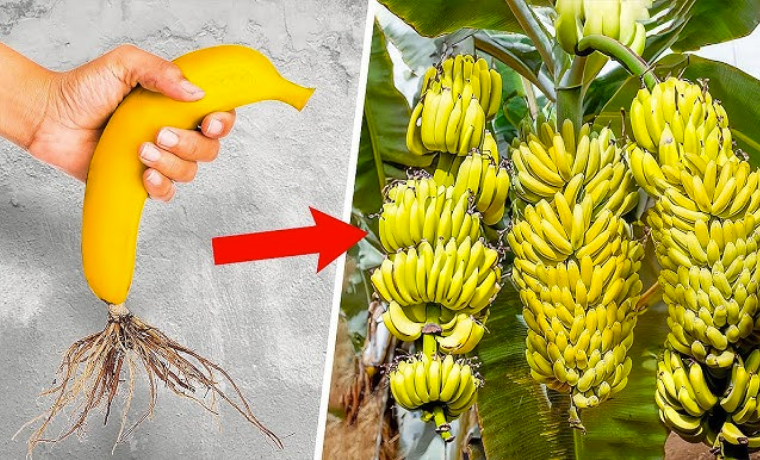Growing a banana tree directly from a store-bought banana is an intriguing idea but, unfortunately, not feasible in the way many might hope. The bananas commonly found in grocery stores are of the Cavendish variety or similar, which are seedless, making it impossible to grow a banana tree from them in the traditional seed-planting sense. However, for those interested in the challenge of cultivating their banana plants, there’s an alternative method involving the use of banana suckers or pups, the baby plants that grow at the base of a mature banana plant. This article explores how you can successfully grow a banana tree, albeit not directly from a banana but through a method that embraces the plant’s natural reproductive processes.
Understanding Banana Propagation
Bananas propagate through rhizomes, not seeds. The “mother” plant sends out underground shoots, known as suckers or pups, which can be separated from the main plant and replanted to grow a new banana plant. This vegetative method of reproduction ensures the genetic clone of the parent plant, maintaining the characteristics of the specific banana variety.
Step-by-Step Guide to Growing Your Banana Plant
Materials Needed:
- Banana pup (obtained from a nursery or an existing banana plantation)
- Well-draining soil
- Compost or well-rotted manure
- Pot or designated planting area
- Watering can or system
- Mulch (optional)
1. Choosing a Banana Pup:
Select a healthy banana pup from a nursery or an existing plantation. The pup should be at least 3 feet tall to ensure it has enough stored energy to survive after being transplanted.
2. Preparation:
If you’re planting in a pot, ensure it’s large enough to accommodate the plant’s root system and provides adequate drainage. For ground planting, choose a sunny spot with protection from strong winds. Banana plants love warmth, sunlight, and protection from harsh elements.
3. Soil and Planting Site:
Prepare the soil by mixing it with compost or well-rotted manure to improve fertility and drainage. Bananas are heavy feeders and thrive in nutrient-rich soil. Dig a hole that’s slightly larger than the pup’s root ball.
4. Planting the Pup:
Carefully place the pup in the hole and backfill with soil, pressing down firmly to eliminate air pockets. Water the plant generously to settle the soil around the roots and help reduce transplant shock.
5. Watering:
Banana plants require a lot of water to thrive, but they don’t like to sit in waterlogged soil. Ensure you provide enough water to keep the soil moist but not soggy. Adjust your watering routine according to the weather conditions, watering more frequently during dry periods.
6. Feeding:
Fertilize your banana plant regularly with a balanced fertilizer to support its rapid growth. Incorporating compost or manure into the soil periodically can also help provide the necessary nutrients.
7. Mulching and Care:
Applying mulch around the base of the plant can help retain soil moisture, suppress weeds, and provide additional nutrients as it decomposes. Keep an eye out for pests and diseases, and manage them promptly to ensure the health of your plant.
8. Patience and Growth:
It can take 9 to 12 months for a banana plant to produce fruit under optimal conditions. Patience is key! The banana plant will grow quite large, so ensure it has enough space to spread out and doesn’t overshadow other plants.
Conclusion
While you cannot grow a banana tree from a store-bought banana, using a banana pup to grow a new plant is a rewarding and fascinating project. With proper care, the right environmental conditions, and a bit of patience, you can enjoy the unique experience of cultivating your own banana plant. Whether you’re aiming for a lush addition to your garden or dreaming of harvesting your own bananas, the journey from pup to fruit-bearing banana plant is an exciting adventure in gardening.

